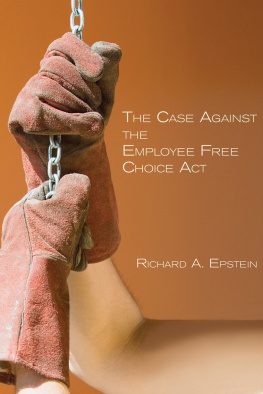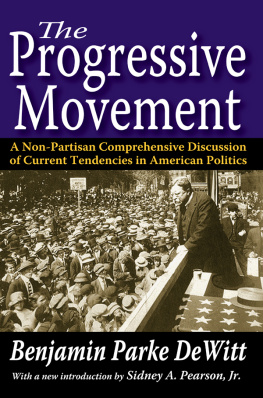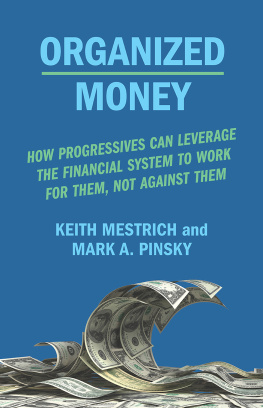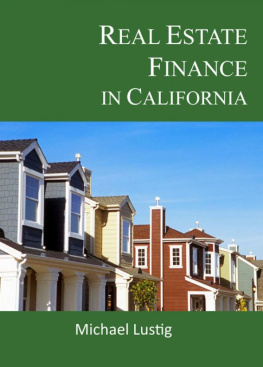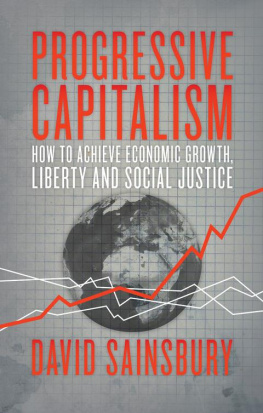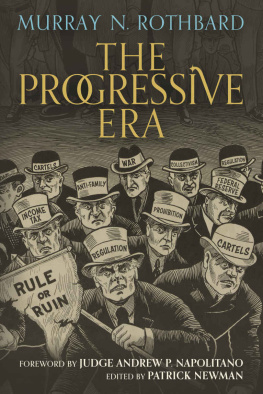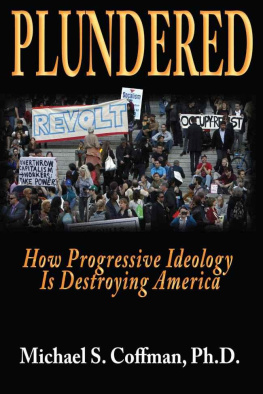
D EDICATION
To the memory of Roger Kerr
19452011
A man of sterling character, iron will, and keen intellect.

ENCOUNTER BROADSIDES: a new series of critical pamphlets from Encounter Books. Uniting an 18th-century sense of political urgency and rhetorical wit (think The Federalist Papers, Common Sense) with 21st-century technology and channels of distribution, Encounter Broadsides offer indispensable ammunition for intelligent debate on the critical issues of our time. Written with passion by some of our most authoritative authors, Encounter Broadsides make the case for liberty and the institutions of democratic capitalism at a time when they are under siege from the resurgence of collectivist sentiment. Read them in a sitting and come away knowing the best we can hope for and the worst we must fear.

Table of Contents
C LASSICAL L IBERAL VS. M ODERN P ROGRESSIVE
T HE MODERN economic malaise in the United States is captured by two numbers. The first is the decline in average family income, which has slid for the past three years and now stands at the same level, adjusted for inflation, that it was in 1996. The second is the persistent level of unemployment at 9.1 percent, which excludes those who are underemployed or have in frustration given up the search for jobs. Everyone across the political spectrum deplores the result and wishes to reverse the trend. But this unanimity of ends gives way to a fierce difference of opinion on means. Just what should be done?
The deep polarization of views clusters on a broad range of macro- and microeconomic issues. The former covers taxation, deficits, public expenditures. The latter is focused single-mindedly on jobs. The intimate connection between these two is evident from the constant political refrain of whether the priority for government action should lie with the elimination of unemployment or with getting the governments fiscal house in order. This entire set of problems is complicated further by the precarious position of the real estate markets, as the major decline in real estate values has led to a torrent of underwater residences subject to foreclosures whose frequency increases with the decline in employment levels. The overall landscape is still more clouded because the budgetary position of many states is precarious, to say the least. What should be done about these pressing matters? In dealing with this question, it is hardly productive to revisit the political sniping that takes place on both sides of the aisle. It is far more important to ask about the fundamental differences in approach to ending the admitted stagnation in the economic sphere.
For simplicity, I shall ignore the important issues at the state level and concentrate on the nationwide problems with public finance, unemployment, and housing. It is somewhat hysterical to call the current malaise a depression. The overall levels of material wealth are far higher than they were in 1935, and the toxic brew of high tariffs, major deflation, high marginal tax rates, and incessant cartelization of labor and agricultural markets is less potent today than it was at the height of the New Deal. But to say that todays economic climate is better than it was at the depths of the depression is not a ringing endorsement of the status quo nor does it explain what should be done. Matters do not become, nor do they remain, this grim simply by chance. Consistent bad results can only be explained by consistent bad policies and not by some mysterious run of bad luck. Bad policies in turn rest on an unsound worldview. So this nation has reached a crossroads in its choice of first principles. The nation must choose between the oft-rejected classical liberalism of its founding period and the modern progressive stance that served as the foundation of Franklin Delano Roosevelts New Deal.
I strongly embrace the former first vision and roundly reject the latter. There is no middle ground on this topic. Nor is there any one way to explain why the progressive vision has led us so badly astray. But it is possible to see what went wrong by focusing on one part of the larger picture: namely, the relative durability of these alternative institutional arrangements. What is needed therefore is a rough measure of the useful half-life of social arrangements. Not even the most ideal set of institutions can just last forever. Every sound set of institutions must be defended, restored, and renewed to undo the damage that political factions of all ideological persuasions seek to turn social events and technological changes to partisan advantages. The problem of factions, both minority and majority, identified by James Madison in Federalist No. 10, cannot be wished away by appeals to the virtues of deliberative democracy. What is needed is a choice of robust institutions that do not have to be re-engineered with each technological innovation or social change.
The terms classical liberal and modern progressive may seem quaint to some people, so let me explain why I use them. The former evokes references to 19th century theories of market liberalization, which were intended to reduce the dead hand of government over the operation of the economy. The second recalls the progressive movement of the first third of the 20th century, which championed the rise of the large administrative state to overcome the perceived weaknesses of the classical liberal synthesis. I use that term progressive here for two reasons. First, many Democrats and champions of large government use it as a form of self-identification. Second, their use of the term relocates the center of discussion away from such 1960s issues as criminal procedure, the death penalty, abortion, and affirmative action to the bread-and-butter economic issues dealing with the regulation of financial institutions, home mortgages, labor markets, and health care, all of which hearken back to the New Deal. In defending this modern roster of reforms, moreover, the modern progressives invoke a Keynesian renaissance that places discussions of stimulus packages, multiplier effects, and aggregate demand at the center of the discourse. The classical liberal has the opposite view. Governments are to supply public goods and maintain social stability, leaving innovation to the private sector.

It is somewhat hysterical to call the current malaise a depression.

The key components of the classical liberal theory are as follows. The first component is the call for limited government funded by tax revenues preferably generated under a flat tax (i.e., one that requires uniform rates for the taxable-income individuals, regardless of their aggregate income in any given tax period). In a sound system of public finance, the governments borrowing to meet the cost of capital improvements is acceptable, but borrowing to pay for short-term-consumption items is not. It is, in other words, proper to use borrowed funds to create long-term capital improvements but not to fund short-term government activity, like the payment of salaries for public employees. Accordingly, the purpose of taxation is to fund the creation of (nonexcludable) public goods that could not be created or maintained without some system of coerced public support. Public finance, however, is not to operate a disguised system of wealth transfer for individuals, which, if anything, it discourages as a road map to reduce taxation to a rarified form of theft.
Next page
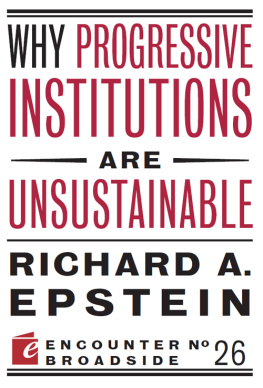
![Richard A. Epstein - Cases and Materials on Torts (Aspen Casebook) [Connected Casebook]](/uploads/posts/book/244338/thumbs/richard-a-epstein-cases-and-materials-on-torts.jpg)
